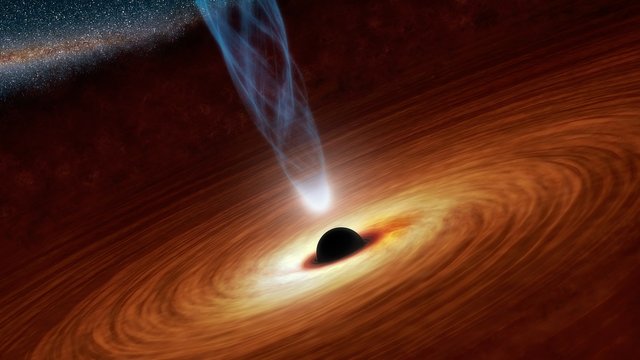Light Fighting To Escape A Black Hole
When light passes the event horizon it cannot be saved. But even the life of light that lives near a black hole isn't easy. It has to fight the gravity of the black hole to brake free.

Image by David Mark from Pixabay
- Be also sure to check out my other posts and follow me @kralizec and subscribe to my Youtube channel at Kralizec Gaming Youtube Channel
As most of you will now – once something gets into the grips of a black hole it cannot be saved. Not even light. Well, quantum scientists would slightly disagree. But when it comes to light its fate is sealed once it reaches the event horizon. But when light is slightly further away – in the swirling disks of matter that dance their crazy tango around the mouth of the black hole – then a drama unfolds. In those cases, light has a chance to escape. And this is the reason why active black holes are so bright in the x-ray part of the electromagnetic spectrum. Plus, the escape certainly isn't easy.
Boomerang Light
Riley Connors and his colleagues from Caltech are the first to bring evidence that light that can be found in the accretion disk of a black hole doesn't have an easy time getting out. Part of the light is desperately fighting with the enormous gravitational pull of the black hole – falling back towards the black hole until it finally manages to pull away and escape into free space.
Connors and his colleague observed the light that is coming from near a black hole. Part of it is clearly coming back towards the disk. These photons are trying to escape but are the first pullback in by the gravity – almost like a boomerang that returns to where it came from. Such processes have been predicted back in the seventies but nobody has observed them until now.
The research is based on data that was mined from archived observations by an already concluded mission of the American probe RXTE (Rossi X-ray Timing Explorer) that worked until 2012. Connors team focused on a binary system XTE J1550-564 in which a black hole orbits a Sun-like star. And as you might assume – in such cases the black hole is slowly eating up the smaller star. Matter from the star is flowing towards to black hole creating an accretion disk around it. When scientists analyzed the x-ray radiation coming to us from the accretion disk they managed to see the furious fight of light trying to escape the black hole.
Connors and his colleagues are saying that their results are a new type of indirect confirmation of Einstein's general relativity. And hopefully, they should also help us to more easily understand and measure the speed at which black holes rotate. That itself is a subject that is very important for physics yet hasn't been fully studied yet.
Sources:
- If you like the content I’m producing about science maybe you will like the content I produce about gaming as well! Be sure to check out my other posts!
science blog news stem hive
That's not any light though, just x-rays.
Downvoting a post can decrease pending rewards and make it less visible. Common reasons:
Submit
x-rays are still a type of light as they are carried by photons
Not visible light though
Downvoting a post can decrease pending rewards and make it less visible. Common reasons:
Submit
That's what I said. It's not any light. I would be thrilled to see visible light do that kind of thing!
Downvoting a post can decrease pending rewards and make it less visible. Common reasons:
Submit